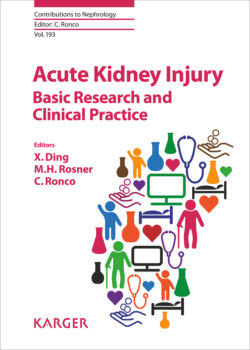Читать книгу Acute Kidney Injury - Basic Research and Clinical Practice - Группа авторов - Страница 16
На сайте Литреса книга снята с продажи.
Additional Limitations of KDIGO Criteria for AKI Diagnosis
Оглавление• AKI is a very heterogeneous syndrome caused by many different pathologies isolated or combined such as hypovolemia, hypoperfusion, hypotension, ischemia, inflammation, sepsis, nephrotoxic drugs, and contrast media. Then, different specific “endotypes” including hepatorenal, cardiorenal, nephrotoxic, and sepsis-associated syndromes have been identified and these conditions all have specific and dedicated pathophysiologies and, sometimes, treatments [24]. In this context, different AKI identified by the same KDIGO stage may have significantly different clinical courses and therapeutic approaches.
• There is no gold standard to validate the KDIGO definition or other AKI markers: even if it was not conceived with this initial aim, the KDIGO definition and criteria has been validated by the association of AKI diagnosis/severity with mortality and other hard outcomes [7, 25, 26].
• Finally, the KDIGO definition of AKI is weak for the evaluation of recovery from renal injury. Some recent studies considered renal recovery as achieved when AKI, defined by KDIGO, is definitely reversed [26, 27]. However, as previously focused, conditions as sarcopenia and/or weight gain due to fluid overload, may cause an overestimation of renal recovery.
